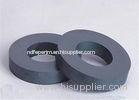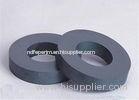

Strong Y35 Permannet Anistropic Ferrite Magnet injection molded Magnets
| Place of Origin: | Zhejiang |
|---|
Company Profile
| Location: | Guangzhou, Guangdong, China (Mainland) |
|---|---|
| Business Type: | Manufacturer |
Product Detail
| Model No.: | Jet-FM-2 |
|---|
Product Description
Strong Y35 Ferrite Magnet Permannet Anistropic Material
General Information
1. Ferrite magnets apart from good resistance to demagnetization, has the popular advantage of low cost too.
2. Ferrite magnets are very hard and brittle, and require specialized machining techniques. Moreover, they should be machined in an unmagnetized state.
3. We are equipped to machine these materials to different specifications.
4. Anisotropic grades are oriented in the manufacturing direction, and must be magnetized in the direction of orientation.
5. Isotropic grades are not oriented and can be magnetized in any direction, although some degree of greater magnetic strength will be found in the pressing dimension, usually the shortest dimension.
6. Due to their low cost, Ferrite magnets enjoy a very wide range of applications, from motors and loudspeakers to toys and crafts, and are the most widely used permanent magnets today.
Common Applications
Ferrite magnets are widely used in motors, magnetic couplings, for sensing, loudspeakers, holding-magnet systems, crafts, magnetic therapy, novelties, and toys.
Surface Treatment
The corrosion resistance of Ferrite is considered excellent , and no surface treatments are required.
However, Ferrite magnets may have a thin film of fine magnet powder on the surface and for clean, non-contaminated applications, some form of coating may be required.
Production Process
Pressing and sintering involves pressing very fine ferrite powder in a die, and then sintering this pressed magnet. All fully dense Ferrite magnets are produced this way. Ferrite magnets can be wet pressed or dry pressed. Wet pressing yields better magnetic properties, but poorer physical tolerances. Generally, the powder is dry for grade 1 or 5 materials, and wet for grade 8 and higher materials. Sintering involves subjecting the material to high temperatures to fuse the pressed powder together, thus creating a solid material. Magnets produced through this process usually need to have some finish machining, otherwise surface finishes and tolerances are not acceptable. Some manufacturers extrude instead of press wet powder slurry and then sinter the material. This is sometimes done for arc segment shapes, where the arc cross-section is extruded in long lengths, sintered, and then cut to length.
Injection Molding Ferrite powder is mixed into a compound and then injection molded in the same way as plastic.
Tooling for this manufacturing process is usually very costly. However, parts produced through this process can have very intricate shapes and tight tolerances. Injection molded ferrite properties are either lower or about the same as grade 1 Ferrite.
Wearhouse and Shipment



